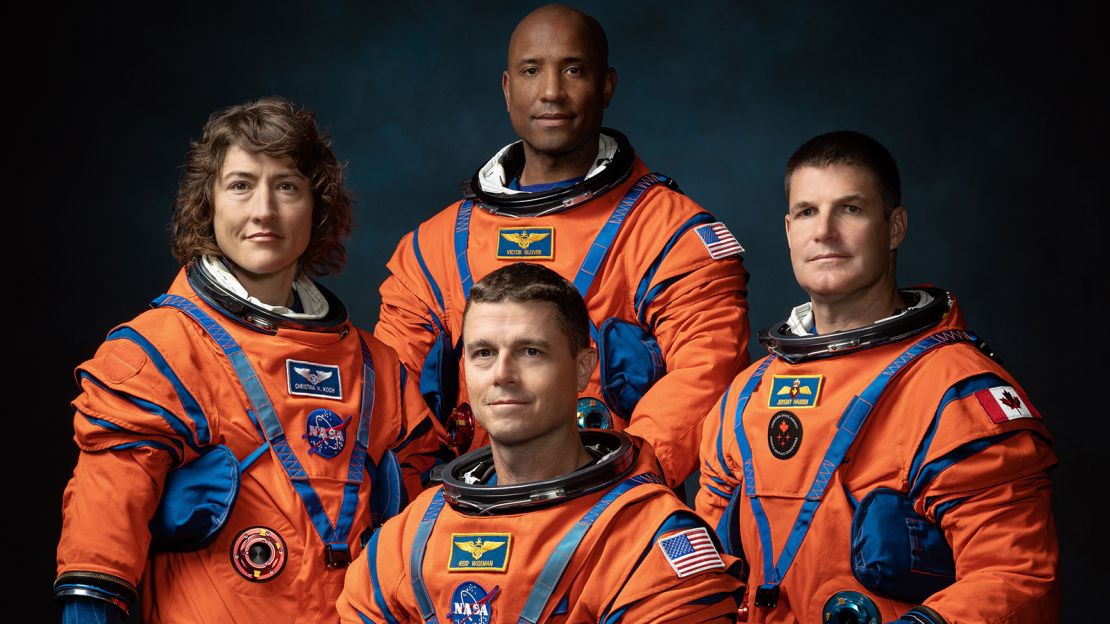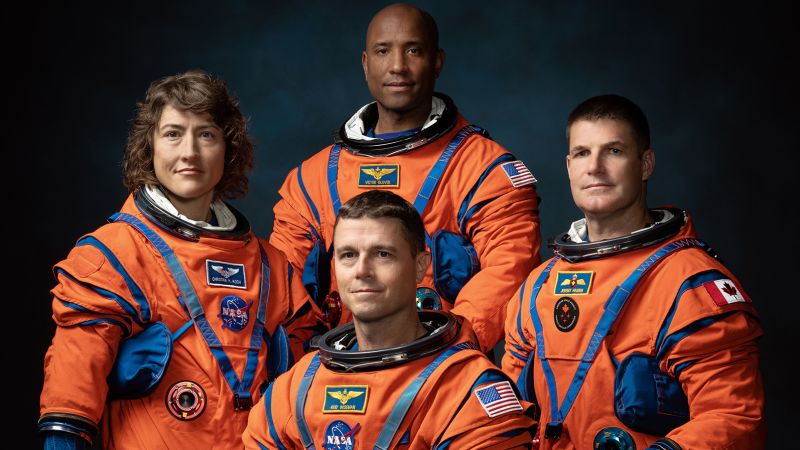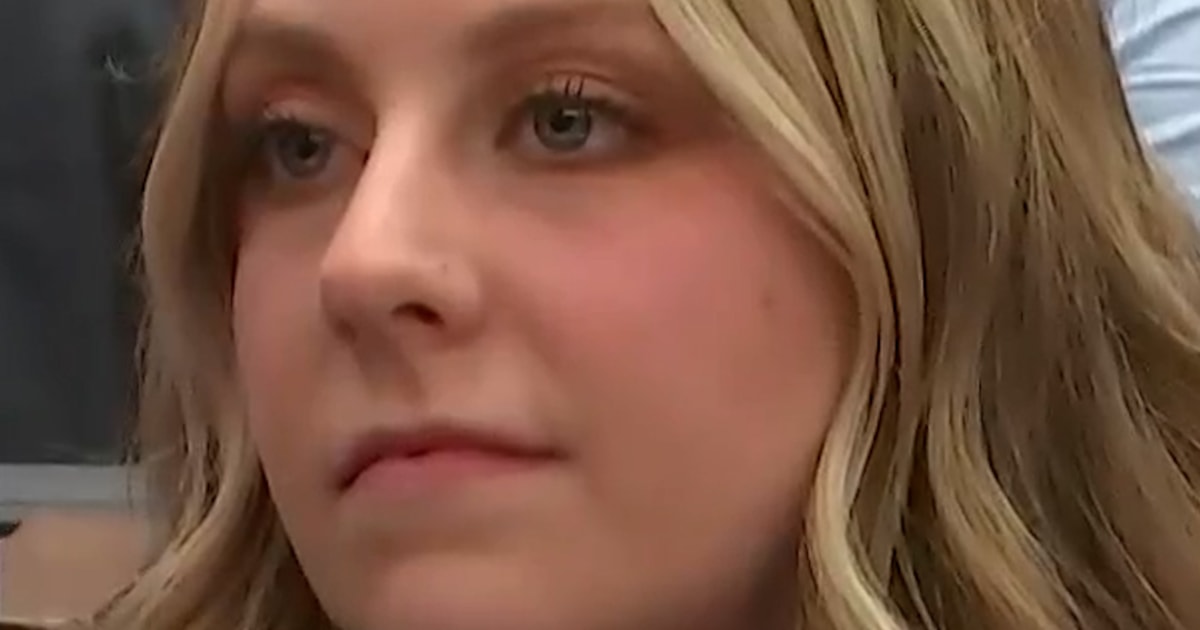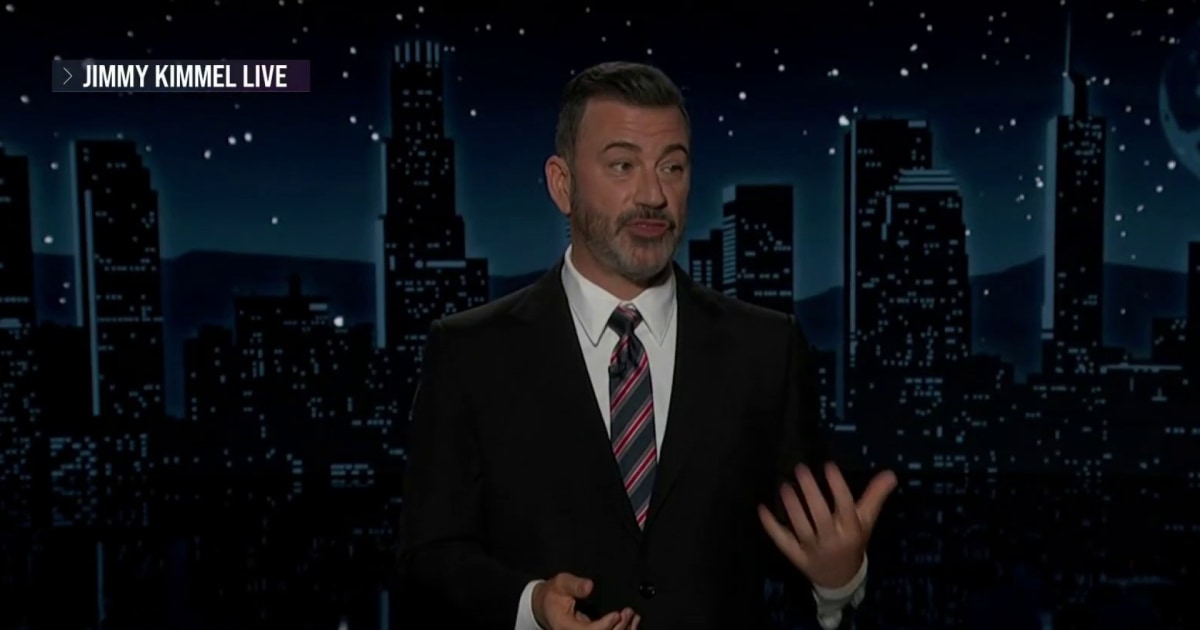Sign up for CNN’s Wonder Theory science newsletter. Explore the universe with news on fascinating discoveries, scientific advancements and more.
CNN
—
Astronauts who will helm the first crewed moon mission in five decades were revealed on Monday, queuing up the quartet to begin training for the historic Artemis II lunar flyby that is set to take off in November 2024.
The astronauts are NASA’s Reid Wiseman, Victor Glover and Christina Koch, and Jeremy Hansen of the Canadian Space Agency.
Wiseman is a 47-year-old decorated naval aviator and test pilot who was first selected to be a NASA astronaut in 2009. A native of Baltimore, Maryland, he’s completed one prior spaceflight, a 165-day trip to the International Space Station that had launched aboard a Russian Soyuz rocket in 2014. Most recently, Wiseman served as chief of the astronaut office before stepping down in November 2022, making him eligible for a flight assignment.
Wiseman will serve as commander of the Artemis II mission.
Hansen, 47, is a fighter pilot who was selected by the Canadian Space Agency for astronaut training in 2009. From London, Ontario, Hansen is one of only four active Canadian astronauts, and he recently became the first Canadian to be put in charge of training for a new class of NASA astronauts.
He will be the first Canadian ever to travel to deep space.
Glover is a 46-year-old naval aviator who returned to Earth from his first spaceflight in 2021 after piloting the second crewed flight of SpaceX’s Crew Dragon spacecraft and spending nearly six months aboard the International Space Station.
“It’s so much more than the four names that have been announced,” Glover said during the Monday announcement at NASA Johnson Space Center in Houston. “We need to celebrate this moment in human history. … It is the next step in the journey that will get humanity to Mars.”
Glover, born in Pomona, California, served in several military squadrons in the United States and Japan in the 2000s, and he completed test pilot training with the US Air Force. When he was selected for the NASA astronaut corps in 2013, he was working in the US Senate as a legislative fellow. All told, Glover logged 3,000 flight hours in more than 40 aircraft, over 400 carrier arrested landings and 24 combat missions.
Glover’s first mission to space was as part of the SpaceX Crew-1 team, which launched to the International Space Station in November 2020 for a six-month stay on the orbiting laboratory.
Koch, 44, is a veteran of six spacewalks — including the first all-female spacewalk in 2019. She holds the record for the longest single spaceflight by a woman, with a total of 328 days in space. Koch is also an an electrical engineer who helped develop scientific instruments for multiple NASA mission. Koch, a native of Grand Rapids, Michigan, also spent a year at the South Pole, an arduous stay that could well prepare her for the intensity of a moon mission.
The Artemis II mission will build on Artemis I, an uncrewed test mission that sent NASA’s Orion capsule on a 1.4 million-mile voyage to lap the moon that concluded in December. The space agency deemed that mission a success and is still working to review all the data collected.

If all goes to plan, Artemis II will take off around November 2024. The crew members, strapped inside the Orion spacecraft, will launch atop a NASA-developed Space Launch System rocket from NASA’s Kennedy Space Center in Florida.
The journey is expected to last about 10 days and will send the crew out beyond the moon, potentially further than any human has traveled in history, though the exact distance is yet to be determined.
The “exact distance beyond the Moon will depend on the day of liftoff and the relative distance of the Moon from the Earth at the time of the mission,” NASA spokesperson Kathryn Hambleton said via email.
After circling the moon, the spacecraft will return to Earth for a splashdown landing in the Pacific Ocean.
Artemis II is expected to pave the way for the Artemis III mission later this decade, which NASA has vowed will put the first woman and person of color on the lunar surface. It will also mark the first time humans have touched down on the moon since the Apollo program ended in 1972.
The Artemis III mission is expected to take off later this decade. But much of the technology the mission will require, including spacesuits for walking on the moon and a lunar lander to ferry the astronauts to the moon’s surface, is still in development.
NASA is targeting a 2025 launch date for Artemis III, though the space agency’s inspector general has already said delays will likely push the mission to 2026 or later.
The space agency has been seeking to return people to the moon for more than a decade. The Artemis program was designed to pave the way to establishing a permanent lunar outpost, allowing astronauts to live and work deeper into space long term as NASA and its partners map a path to sending the first humans to Mars.
Vanessa Wyche, the director of NASA’s Johnson Space Center, declined to provide details to CNN about the selection process. But she emphasized the diversity of the Artemis II crew, which includes men and women rather than only a staff of White male test pilots as has been the case for historic missions of the past.
“I can tell you, they still all have the right stuff,” Wyche said. “We have requirements different than we did (when we) just had test pilots” on inaugural missions.
Koch said in an interview with CNN’s Ed Lavandera that the group found out they were selected a few weeks ago.
“We were all sent to a meeting that was on our calendars under a different pretext that didn’t sound as lofty as the one it was going to be,” Koch said. “And accidentally two of us were very late to that meeting.”
She said the offer rendered her “speechless.”
“It truly is an honor,” she added. “It’s an honor — not to get myself in the space — but because it’s amazing to be a part of this team that’s going back to the moon and on to Mars.”
An interview with the four astronauts will air on “CNN This Morning” on Tuesday, which starts at 6 am ET.




